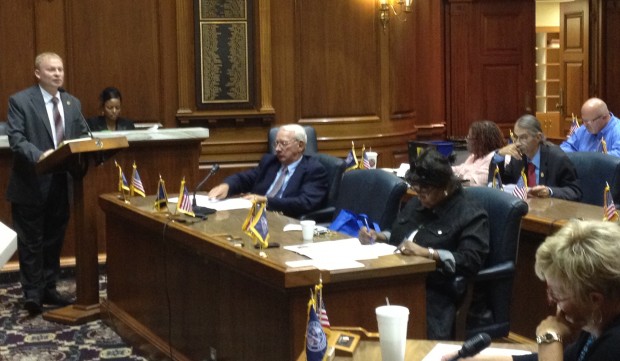Indiana Commission Crafting Guidelines On Seclusion And Restraint In Schools

Brandon Smith / IPBS
Sen. Randy Head presents his legislation to members of the autism study committee Wednesday.
The newly-formed Indiana Commission on Seclusion and Restraint is crafting a set of guidelines this summer for how schools should handle disruptive students. From Indiana Public Broadcasting’s Samantha Paul:
Republican State Senator Randy Head authored the legislation that created the commission. He’s also a member of the Indiana Autism Commission. He says as the commission creates the policy, it needs to keep students with special needs top of mind.
“It applies to all students at all times. I do think the special education population is going to be the most vulnerable population, so it’s more likely that seclusion and restraint will occur with those students,” he said.
Public and accredited private schools must adopt the state guidelines or put their own policies in place by the 2014-2015 school year.
John Elcesser, the executive director of the Indiana Non-Public Education Association, sits on the commission. He says right now the group’s studying what works in other states so the guidelines can provide more than general recommendations.
“I think there’s a little bit more background and study that’s being done with the creation of this commission, and the commission will also have an ongoing role in monitoring the implementation over time,” he said.
The plan is to train teachers on how to use the guidelines at low or no cost to schools.
We’ve written before that Indiana last reviewed its policy on seclusion and restraint in 2009. At the time, only about half of the state’s school districts had formal rules governing the use of seclusion and restraint. The State Board of Education recommended districts adopt policies, but did not mandate they do so.
An investigation last summer by our StateImpact Ohio colleagues and the Columbus Post-Dispatch found more than 60 percent of the students secluded in Ohio schools in 2011-12 had disabilities.
Check out this March episode of WFIU’s Noon Edition for more on how seclusion and restraint impacts students with special needs.